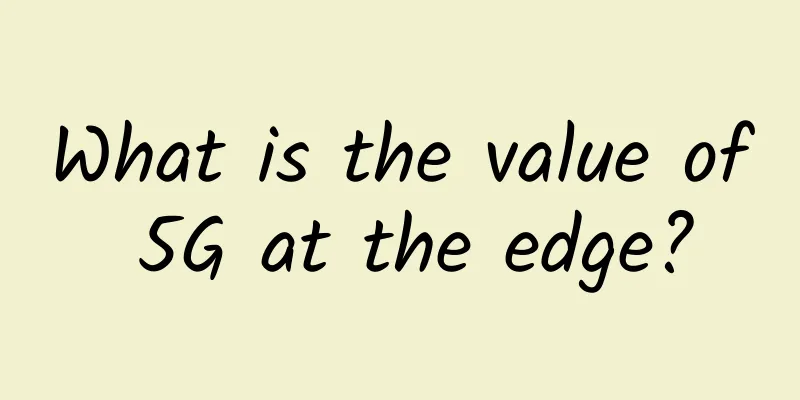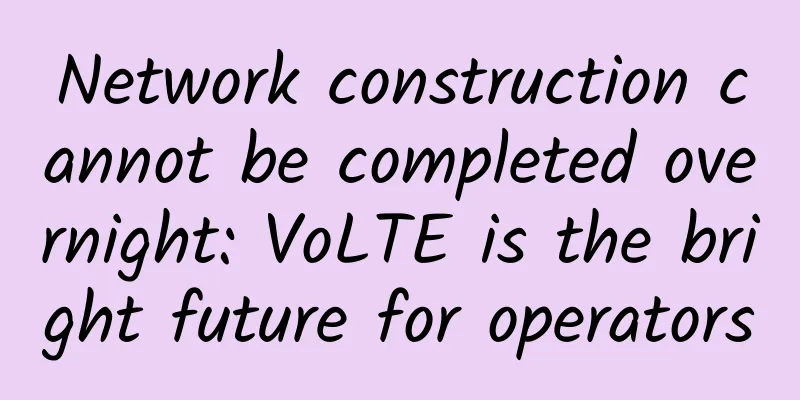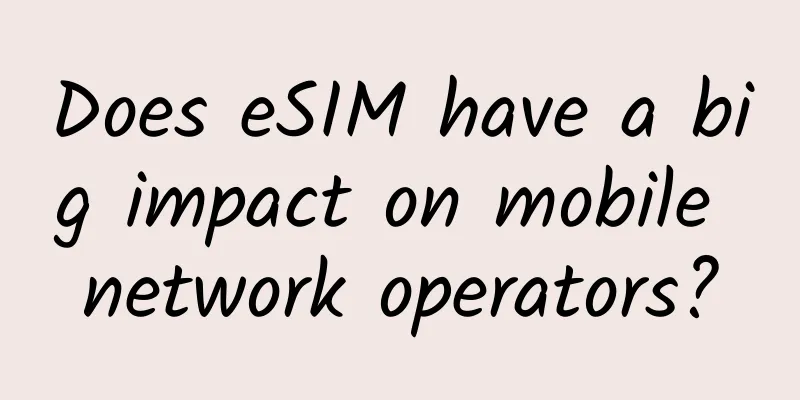What is the value of 5G at the edge?

|
A lot of people have been questioning the value of 5G at the edge lately. Can't we just use Wi-Fi? We can build a long-range wide area network (LoRaWAN) network for our IoT devices and technologies. Is 5G ready to make a difference? I don't see any difference on my smartphone. These are all very good questions and concerns. So why is 5G at the edge important? Why is 5G at the edge important?5G is not only an evolving technology in its early stages; its global deployment is even earlier. Some markets don’t have many 5G devices, and those that do have 5G devices have barely moved on from their old LTE core networks. We still have a long way to go. And expect some new features of 5G to emerge at the edge that will make it distinct from alternative forms of wireless and wired access for distributed edge applications. Let’s take a look at some of them. ●Critical connections 5G, especially Release 16 and beyond, will bring some powerful capabilities that make ultra-reliable, low-latency mobile wireless communications a reality. This is a big deal. It won’t be ubiquitous, and deployments will be carefully planned and highly engineered. However, there are and will be scenarios where critical mobile communications are critical and of high value. ●Deterministic wireless communication 5G in its advanced versions really starts to build deterministic network capabilities. This means that real-time applications that require a high degree of synchronization will likely be possible over private 5G or certain areas of the operator network. Why is this important? Before the recent launch of 5G, mobile networks have always been best efforts. With standalone 5G networks with a 5G core, a new class of deterministic network services will begin to enter the market. ●Massive bandwidth Generally speaking, 5G brings massive amounts of bandwidth, which means huge capacity and throughput. This means faster download speeds and, therefore, enhanced uplink capacity. This is due to the new spectrum in the millimeter wave spectrum range made available by 5G, as well as more efficient use of the legacy spectrum for 4G, 3G, and 2G, which will eventually be redeveloped. ●Massive IoT device support 5G networks will be able to support a large number of devices per square kilometer and bring new types of connected smart devices, thanks to a new feature called 5G NR-Light for reduction Capability or Red Cap. NB-IoT (Narrowband Internet of Things) has begun to gain traction, especially in China, enabling operators to provide economical connectivity for low-power IoT devices deployed in unconstrained and constrained environments and scenarios. Avoid the Wild West The Internet is crazy and best effort at best. Operator networks are highly secure and reliable. As more operators accept and deploy standalone (SA) 5G networks that no longer rely on the LTE core, and as end-to-end network slicing becomes a reality, more dedicated and deterministic services will enter the market. Many of the deterministic features of 5G can be natively implemented in various dedicated network architectures for time-sensitive applications. These aspects distinguish cellular networks from the Internet and other access network technologies such as Wi-Fi and LoRa. Devices on a carrier network, whether it is a telecom network or a private network, use SIM cards to authenticate on the network. The much-anticipated private 5G networks leverage the same technology to bring carrier-grade capabilities. Private LTE networks also offer this differentiation, which is why they have been in the market for many years. Many of the benefits that cellular networks bring are due to the core network, which makes the LTE or 5G network a managed network, rather than an open network, that is, the Internet. What impact will 5G have at the edge?In the 5G era, what do the advantages and differences of cellular network technology mean for edge services? New mobile computing possibilities Wi-Fi is cool, but not for mobile computing applications. Then there's LoRaWAN. These networks will enable new mobile computing models and use cases beyond smartphones. This means that the Internet of Things brings more types of connected and smart devices. This is important because this opens up a whole new way to look at edge computing in the 5G era and beyond. ●Will make the Internet of Things happen The network aspect of IoT, especially massive IoT, has been a challenge to date. Historically, coverage has been one of the key limiting factors. 5G is expected to change this with new features such as NB-IoT evolving through 5G and 4G capabilities, providing operators with new possibilities for cost-effective 5G IoT services that leverage existing network and spectrum assets. More devices means higher IoT sensor density 5G's support for massive IoT will enable enterprises to expand and deepen visibility at the edge of their business. It will also provide higher levels of fidelity in operational insights, thanks to higher capacity access networks that can capture more data from more devices at the edge of the enterprise. It all comes down to sensory density. ●More real-time edge applications Let’s be honest, the most real-time environment in the enterprise is not the headquarters. The field, shop floor, and retail locations are where the real real-time applications are. 5G will enable a wider range of edge applications that can leverage the real-time, reliable capabilities available in private or carrier networks nearby. Final Thoughts5G means the possibility of cross-edge mobile innovation, especially for critical applications and large-scale IoT scenarios. As 3GPP evolves this generation of mobile wireless technology, these are indeed the best options for 5G now and in the future. The best thing about 5G is that it is global. This is important for IoT, especially massive IoT. The promise is possible if we understand 5G and its real impact on reshaping business and customer experience for at least the next few decades. |
<<: Global fiber shortage threatens 5G and data center infrastructure
>>: Next-generation network management is difficult without AIOps
Recommend
RackNerd adds 5 new data centers in San Jose, Dallas, etc., with 2G memory packages starting at $25 per year
Yesterday I received an email from RackNerd, sayi...
An overview of 10 common HTTP status codes
Overview The HTTP status code is a 3-digit code u...
5G small base stations are about to take off!
On the one hand, the higher frequency band of 5G ...
PacificRack: $7.99/year KVM-768MB/13GB/1TB/Los Angeles data center
PacificRack started selling the new Virtualizor p...
The 5G vision has not yet been fully realized, but 6G is coming?
◎ Science and Technology Daily reporter Liu Yan O...
Huawei launches intelligent data solution FusionData to unlock data value
[Beijing, China, June 5, 2019] Huawei released it...
Three-minute review! A quick overview of 5G industry development trends in September 2021
After the rapid development in 2020, 2021 is a cr...
Allocating 5G private network spectrum is conducive to promoting market competition
Recently, the delayed 5G spectrum auction in Indi...
HostKvm is now 30% off in Korea, dual core/4G memory/40G hard disk/1.2T traffic/monthly payment of $7.35
HostKvm is a Chinese VPS service provider founded...
What is the network VRRP protocol, and can it really solve network stability issues?
With the rapid development of the Internet, vario...
5G NB-IOT Billion Journey Online Industry Summit was held online. "New Infrastructure New IoT" opens up new opportunities
[51CTO.com original article] On April 15, 2020, t...
Breaking news: China Unicom announced that it will shut down its 2G network. After 17 years, 2G has successfully retired!
Not long ago, there was news that China Unicom wa...
In the new infrastructure era, IIoT empowers China's manufacturing industry with surging power. TreeRoot Interconnect and Gartner jointly released an industry report
On March 24, 2020, Shugen Interconnect and Gartne...
Sogou opens dictation service, the voice recorder industry enters the AI era
On August 28, 2019, Sogou held a press conference...
RepriseHosting: Seattle servers starting from $22.45/month, free double memory, with IPMI, support Alipay
RepriseHosting is a long-established American bus...









